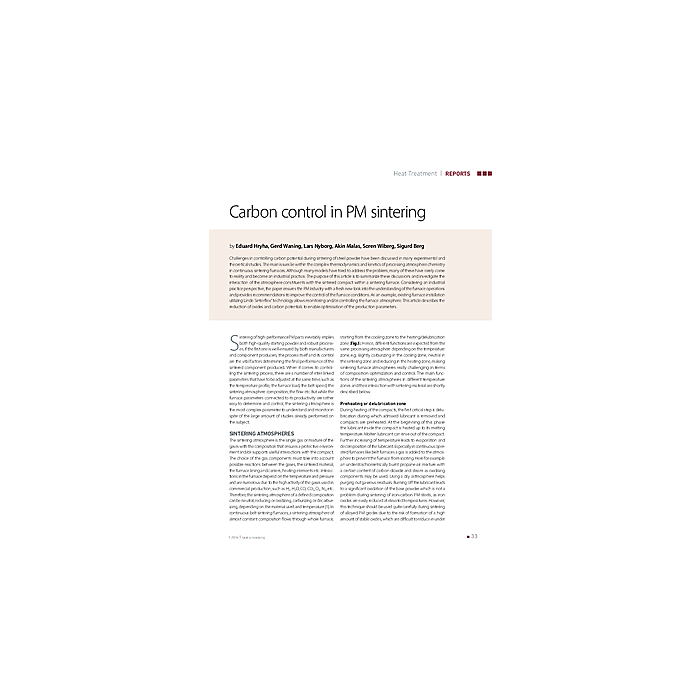Carbon control in PM sintering
4,90 €
Auf Lager
Artikelnummer
00541_2014_01_01
Challenges in controlling carbon potential during sintering of steel powder have been discussed in many experimental and theoretical studies. The main issues lie within the complex thermodynamics and kinetics of processing atmosphere chemistry in continuous sintering furnaces. Although many models have tried to address the problem, many of these have rarely come to reality and become an industrial practice. The purpose of this article is to summarize these discussions and investigate the interaction of the atmosphere constituents with the sintered compact within a sintering furnace. Considering an industrial practice perspective, the paper ensures the PM Industry with a fresh new look into the understanding of the furnace operations and provides recommendations to improve the control of the furnace conditions. As an example, existing furnace installation utilizing Linde Sinterflex® technology allows monitoring and/or controlling the furnace atmosphere. This article describes the reduction of oxides and carbon potentials to enable optimisation of the production parameters.
| Autoren | Eduard Hryha / Gerd Waning / Lars Nyborg / Akin Malas / Soren Wiberg / Sigurd Berg |
|---|---|
| Erscheinungsdatum | 01.01.2014 |
| Format | |
| Zeitschrift | heat processing - Issue 01 2014 |
| Verlag | Vulkan-Verlag GmbH |
| Sprache | English |
| Seitenzahl | 7 |
| Titel | Carbon control in PM sintering |
| Beschreibung | Challenges in controlling carbon potential during sintering of steel powder have been discussed in many experimental and theoretical studies. The main issues lie within the complex thermodynamics and kinetics of processing atmosphere chemistry in continuous sintering furnaces. Although many models have tried to address the problem, many of these have rarely come to reality and become an industrial practice. The purpose of this article is to summarize these discussions and investigate the interaction of the atmosphere constituents with the sintered compact within a sintering furnace. Considering an industrial practice perspective, the paper ensures the PM Industry with a fresh new look into the understanding of the furnace operations and provides recommendations to improve the control of the furnace conditions. As an example, existing furnace installation utilizing Linde Sinterflex® technology allows monitoring and/or controlling the furnace atmosphere. This article describes the reduction of oxides and carbon potentials to enable optimisation of the production parameters. |
Eigene Bewertung schreiben


